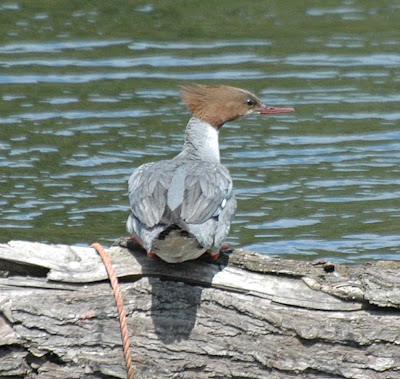


A few days ago Ron Bloomquist published at interesting photo of a ‘hiccuping’ intermittent snail trail on his Walking Fort Bragg blog, and was wondering how it might have come about (see http://walkingfortbragg.com/2009/07/so-how-foggy-was-it.html) .This snail wandered across my path today and this series of photos shows quite nicely how hit moves, with a head-to-tail wave of muscular contraction along its foot which is slightly arched – check out the way the gap under its foot moves backwards as the snail moves forwards in this top-to-bottom sequence (double-click the images for a larger, clearer view). It occurs to me that if the snail was crawling along a hot road surface and wanted to minimise the exposure of its foot to the heat it might well arch its foot even more, and might leave a trail like the one Ron saw...........just a thought.





































































